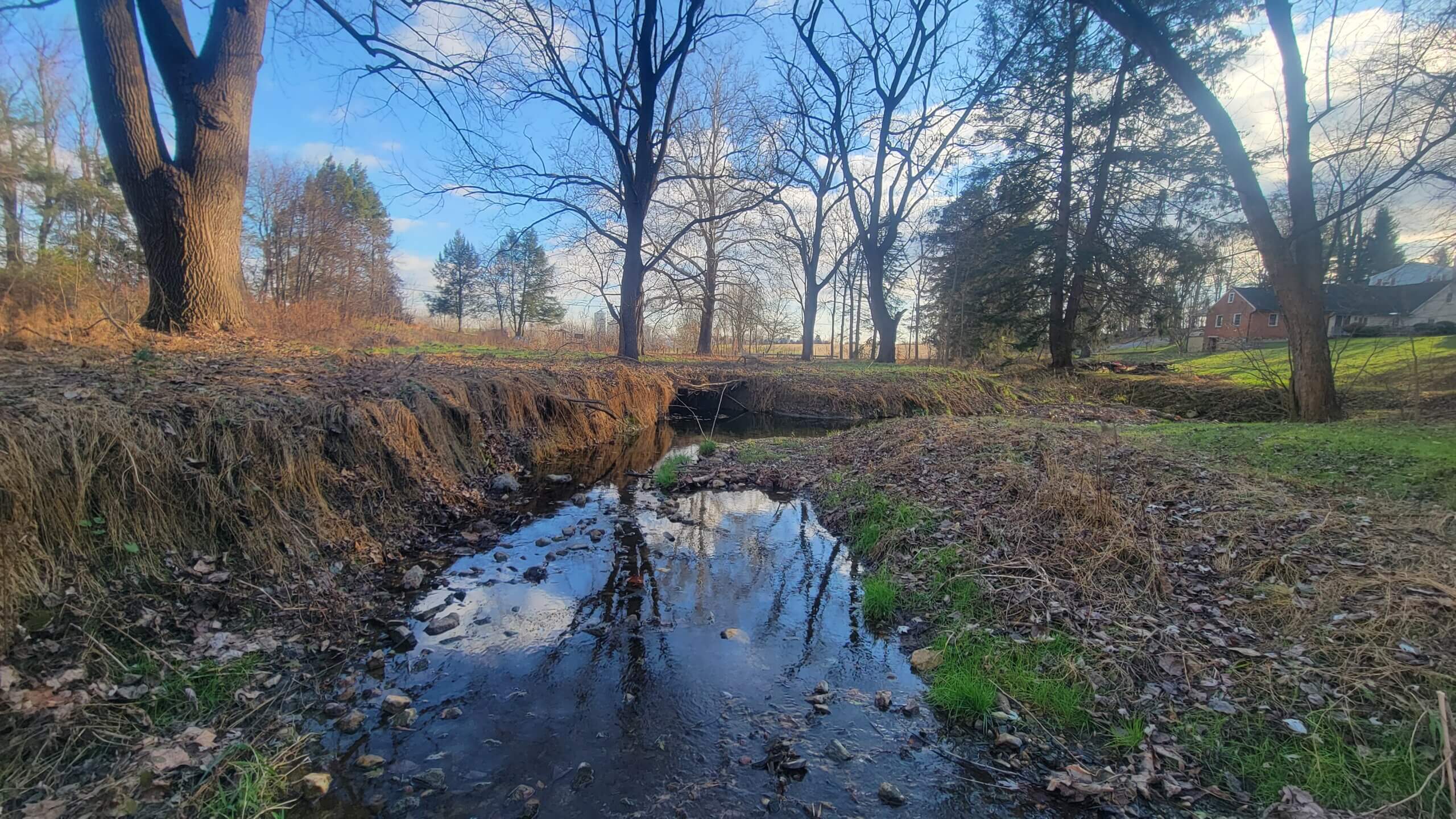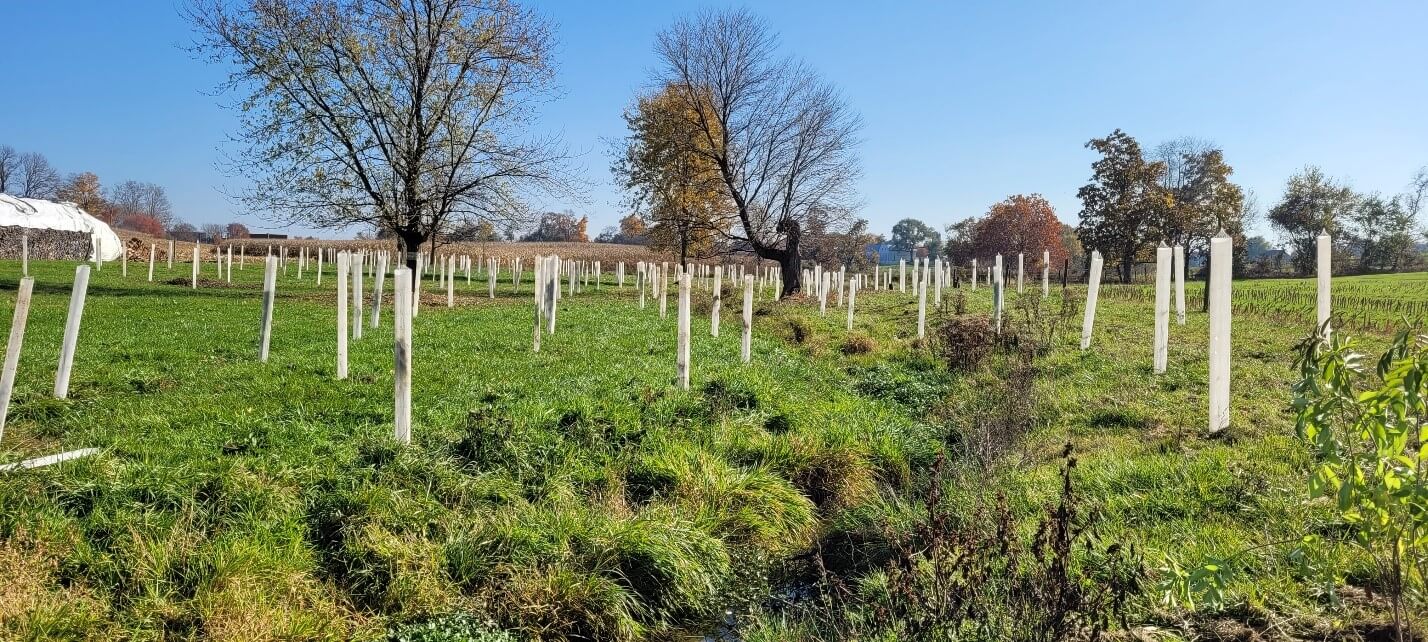
Conserving Lancaster's streams since 1950
Stream Restoration Case Studies
Mill Creek Case Study
A stream restoration project on Mill Creek during the summer of 2022.
In 2020, a concerned landowner reached out to the District, worried about the increased stormwater he was receiving from the Tanger Outlets and related shopping areas. During a big storm event, his pasture would flood, rendering it unusable for livestock. On top of the landowner’s concerns, the stream on his property, a tributary to Mill Creek, had limited habitat, significant siltation, and eroded banks. The stream and pasture needed help, and stream restoration was the tool the fix it. Using Mill Creek 319 funds from the EPA, we designed, permitted, and constructed a project that would restore the stream and reduce the landowner’s flooding problems.
Click to read more to learn how the Lancaster County Conservation District solved the landowner’s issues while maintaining farm operations.
Conowingo Creek Case Study
A stream restoration project on Conowingo Creek during the spring of 2023.
Concerned about their stream’s highly eroded banks, a landowner located along the Conowingo creek reached out to Lancaster County Conservation District (LCCD) and Donegal Trout Unlimited (DTU) to see if the problem could be addressed. Increased sediment input and erosion along streambanks is a common issue that many landowner’s face in the county, and we knew just how to solve it. Through the EPA’s 319 Grant funding source, we were able to design a project that restored the stream and increased habitat availability for wildlife.
Click to learn more about the transformation of this landowner’s stream and how the Lancaster County Conservation District played a large part in finding the solution.

Example of eroded banks on Conowingo Creek.
Mill Creek Riparian Planting Case Study
A riparian planting project along a Mill Creek Tributary during the fall of 2022.
A landowner reached out to the District inquring about getting a riparian buffer planted along a tributary to Mill Creek. At the District, Tyler Keefer, the watershed resource technician, worked with the landowner to design and plant a riparian buffer resulting in a total of 1.2 acres, 325 trees, and 25 different species.
Click to learn more about the thought and planning that go into riparian buffer plantings at the Lancaster County Conservation District.
UNT to Pequea Creek Case Study
A stream restoration project on an unnamed tributary to Pequea Creek during the fall of 2023.
In 2021, a private landowner reached out to the District with concerns about their eroded banks. The private landowner later joined in collaboration with the Lancaster County Conservancy, as they manage the Shiprock Woods Nature Preserve, which is parallel to the stream. Together, the two agreed that a stream restoration project was necessary in order to solve issues resulting from heavy agriculture use upstream. Through Exelon Habitat Improvement and National Fish & Wildlife Foundation (NFWF) funding sources, we were able to restore the stream and increase habitat availability.
Click here to learn more about how the Lancaster County Conservation District solved the landowner’s issues while also using this unique opportunity to engage and educate the public on a stream restoration project.

Example of eroded banks on the UNT to Pequea Creek.
Lancaster County Watershed Quick Links
Use these watershed links to find information that’s available for each of these locations.
Business Hours
Monday—Friday
7:30am-4:00pm

